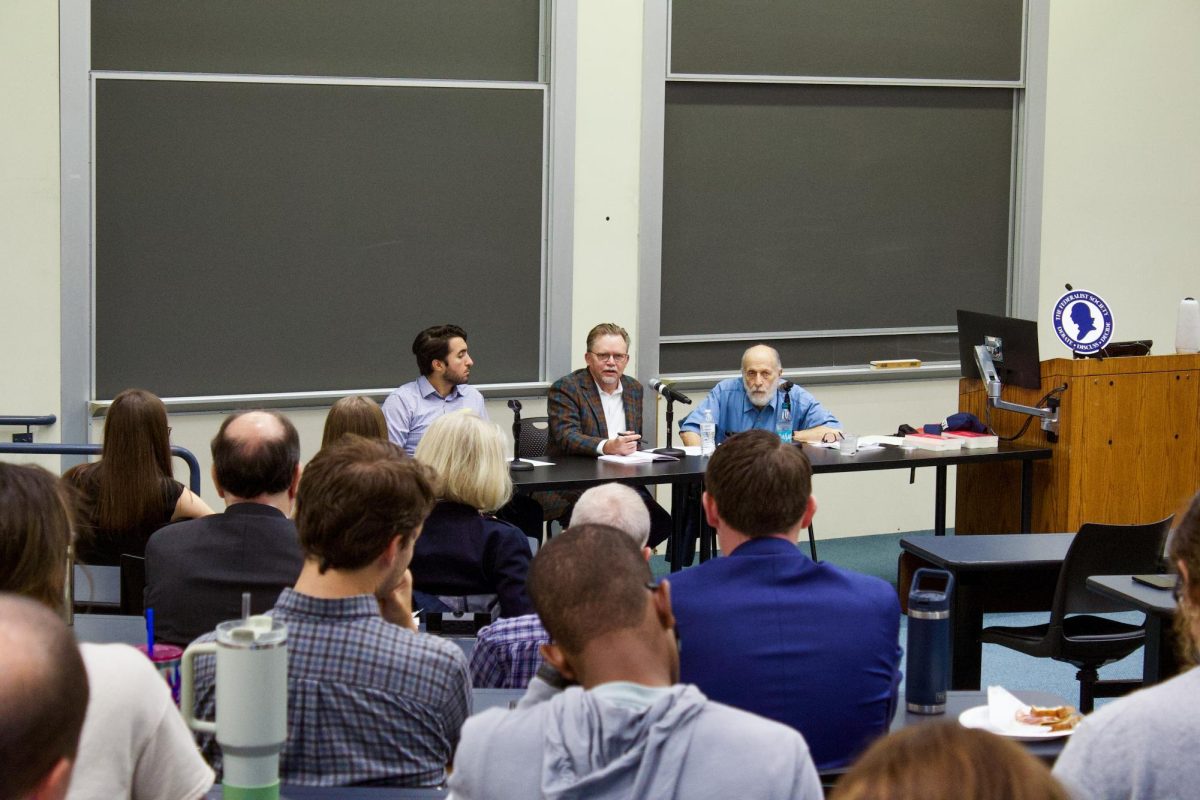This year marks the second iteration of UGBC’s “Dress with Respect” campaign, intended to encourage BC students to be aware of the connotations of costumes that they don for Halloween. According to Natali Soto, vice president for diversity and inclusion and A&S ’14, during her sophomore year she and others on the AHANA Leadership Council (ALC) began to notice a trend of racially and religiously offensive costumes worn during Halloween celebrations, both at BC and elsewhere in the U.S.
“We had a conversation about what makes a costume offensive, what makes it not,” Soto said. “The following year, I was in the policy department in [ALC], and decided to create a campaign, because I loved the conversation we had had the previous year, but I wanted to be proactive about it and engage students in a conversation on the issue.”
Soto worked with other members of the ALC policy staff to create a proactive conversation that would take place before Halloween in order to get students thinking about potentially offensive interpretations of various costumes.
“Our purpose isn’t to tell students what to wear and what not to wear, but rather to encourage students to have a conversation about this before they put on their costumes, because some costumes, while they may not be offensive to you, may be offensive to some of our peers,” she said.
Soto and the other campaign members started using Proxe stations in order to poll students informally on what costumes they did or did not find personally offensive. An example Proxe station featured pictures of various costumes that had garnered online attention, such as a “guido” and a person wearing an orange jumpsuit, an alien mask, and holding a green card. Students were asked to place stickers indicating whether they thought the costume was offensive, not offensive, or were not sure.
“A lot of students would ask, ‘Is this a trick question?’ or ‘Am I supposed to find them all offensive?,’ ‘Does it make me racist if I don’t find some of them offensive?’-and that’s not our purpose at all,” Soto said. “Our purpose is, to encourage students to think about what they personally find offensive, why they do or do not, and then have them compare their responses to the rest of those who participated.” The stations, Soto said, are simply intended to get students to start thinking about what is or is not offensive, and be aware that other students might have a different reaction to a particular costume.
This year, the Dress with Respect campaign has ramped up its online presence, using a Facebook page to publicize the campaign, handing out stickers and buttons with the Dress with Respect logo, and asking student leaders and administrators to participate by taking a pledge online or in person to dress respectfully for Halloween. The campaign members-Anne Joseph, A&S ’14; Kate Saxton, A&S ’15; Mike Rosella, A&S ’15; Seamus Cassidy, A&S ’16; Grace Lee, CSOM ’17; Adisa Duke, A&S ’15; Jaime Tang, A&S ’16; and Kay McCoy, A&S ’16;-also added a contest for best respectful costume that students can enter for the chance to win gift cards.
“Last year was the very first year we did it-we were learning the ropes as the campaign was going on,” Soto said. “Our message was misconstrued by several students-especially with the term respect, we mean respect in terms of respecting your peers’ cultures, sexual orientation, religious identities, etc.” Soto said. She said that initially, some students misconstrued the message to dress in a culturally and religiously respectful fashion with a directive from UGBC to avoid racy Halloween costumes.
Soto said that while the campaign went well last year, it didn’t receive as much attention before Halloween as the planning committee had intended.
“I think ‘Hypersensitive Halloween’ was actually more of a positive for us, because it generated a lot of attention to the issue,” she said. “Administrators picked up on it … they had a conversation about it, so many students were having conversations about, Is Halloween actually turning into a hypersensitive issue? Is it something that we actually need to talk about?” Soto said, however, that because the column was published after Halloween, the discussion that it generated was too late to affect students’ costume choices-she mentioned that students have been more aware of the campaign this year, though, as they still remember the response to “Hypersensitive Halloween.”
Soto acknowledged that the question of respectful Halloween costumes has become a hot topic across the U.S., but their campaign in particular has garnered attention from other schools. “We’ve talked about possibly copyrighting ‘Dress with Respect,’ because students from other colleges, specifically American University, have reached out to us to see if they can use our logo and ideas,” Soto said. She said that while the campaign members support the use of the slogan, they want to ensure that other universities link back to the UGBC campaign in order to preserve the intended message.
“We’re not trying to lecture at students, or tell them what to wear or what not to wear, we’re just trying to make it a fun campaign, reminding students to be cognizant of what they wear on Halloween and how it might affect your peers,” Soto said.






